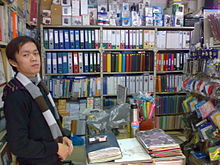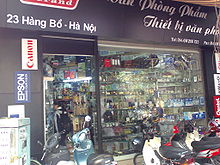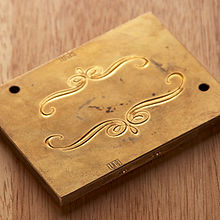- Stationery
-
Not to be confused with Stationary.
Stationery has historically meant a wide gamut of materials: paper and office supplies, writing implements, greeting cards, glue, pencil case etc.
Contents
History of stationery
Originally the term "stationery" referred to all products sold by a stationer, whose name indicates that his book shop was on a fixed spot, usually near a university, and permanent, while medieval trading was mainly peddlers (including chapmen, who sold books) and others (such as farmers and craftsmen) at non-permanent markets such as fairs. It was a special term used between the 13th and 15th centuries in the manuscript culture. The Stationers' Company formerly held a monopoly over the publishing industry in England and was responsible for copyright regulations.
In its modern sense of (often personalized) writing materials, stationery has been an important part of good social etiquette, particularly since the Victorian era. Some usages of stationery, such as sending a manufactured reply card to a wedding invitation, has changed from offensive to appropriate.[1] Many of these social guidelines may have been defined by the manufacturers of stationery products themselves, such as "Crane's Blue Book of Stationery" showing so much influence by Crane & Co. that the company name is included in the title.[2]
The usage and marketing of stationery is a niche industry that is increasingly threatened by electronic media. As stationery is intrinsically linked to paper and the process of written, personalized communication, many techniques of stationery manufacture are employed, of varying desirability and expense. The most familiar of these techniques are letterpress printing, embossing, engraving, and thermographic printing (often confused with thermography). Flat printing and offset printing are regularly used, particularly for low cost or informal needs.
Styles of printed stationery techniques
Letterpress printing
Main article: Letterpress printingLetterpress is a printing method that requires characters being impressed upon the page. The print may be inked or blind but is typically done in a single color. Motifs or designs may be added as many letterpress machines use movable plates that must be hand-set.
Embossing
Embossing is a printing technique used to create raised surfaces in the converted paper stock. The process relies upon mated dies that press the paper into a shape that can be observed on both the front and back surfaces.
Engraving
Main article: EngravingEngraving is a process that requires a design to be cut into a plate made of a relatively hard material. It is a technology with a long history and requires significant skill and experience. The finished plate is usually covered in ink, and then the ink is removed from all of the un-etched portions of the plate. The plate is then pressed into paper under substantial pressure. The result is a design that is slightly raised on the surface of the paper and covered in ink. Due to the cost of the process and expertise required, many consumers opt for thermographic printing, a process that results in a similarly raised print surface, but through different means at less cost.
Thermographic printing
 Example of thermographic printing. The uneven quality of the text is a result of the process and easily differentiates thermographic printing from embossing
Example of thermographic printing. The uneven quality of the text is a result of the process and easily differentiates thermographic printing from embossing Main article: Thermographic printing
Main article: Thermographic printingThermographic printing is a process that involves several stages but can be implemented in a low-cost manufacturing process. The process involves printing the desired designs or text with an ink that remains wet, rather than drying on contact with the paper. The paper is then dusted with a powdered polymer that adheres to the ink. The paper is vacuumed or agitated, mechanically or by hand, to remove excess powder, and then heated to near combustion.[3] The wet ink and polymer bond and dry, resulting in a raised print surface similar to the result of an embossing process.
Classifications
- Desk top instruments: hole punch, Stapler and staples, tapes and dispenser,
- Drawing instruments: brushes, colour pencils, crayons, water colour,
- Erasers
- Ink and toner:
- Dot matrix printer's ink ribbon
- Inkjet Ink cartridge
- Laser printer toner
- Photocopier toner
- Filing and storage:
- Expandable file
- File folder
- Hanging file folder
- Index cards and files
- Two-pocket portfolios
- Mailing and shipping supplies:
- Paper and pad:
- Notebooks, wirebound notebook, writing pads
- Office paper: dot matrix paper, inkjet paper, laser paper, Photocopy paper.
- Writing instruments: ballpoint pen, fountain pen, pencil, porous point pen, rollerball pen, highlighter pen
See also
- Crane & Co.
- teNeues
- New Zealand standard for school stationery
- Office 1 Superstore
- Smythson
- WHSmith
- Online Stationery Portal
References
- ^ Crane's - Etiquette
- ^ Feinberg, Steven L. (2002). Crane's Blue Book of Stationery: The Styles and Etiquette of Letters, Notes, and Invitations. Crane & Co.. ISBN 978-0972292108.
- ^ International Paper - description of thermography
Categories:- Office equipment
- Stationery
Wikimedia Foundation. 2010.





